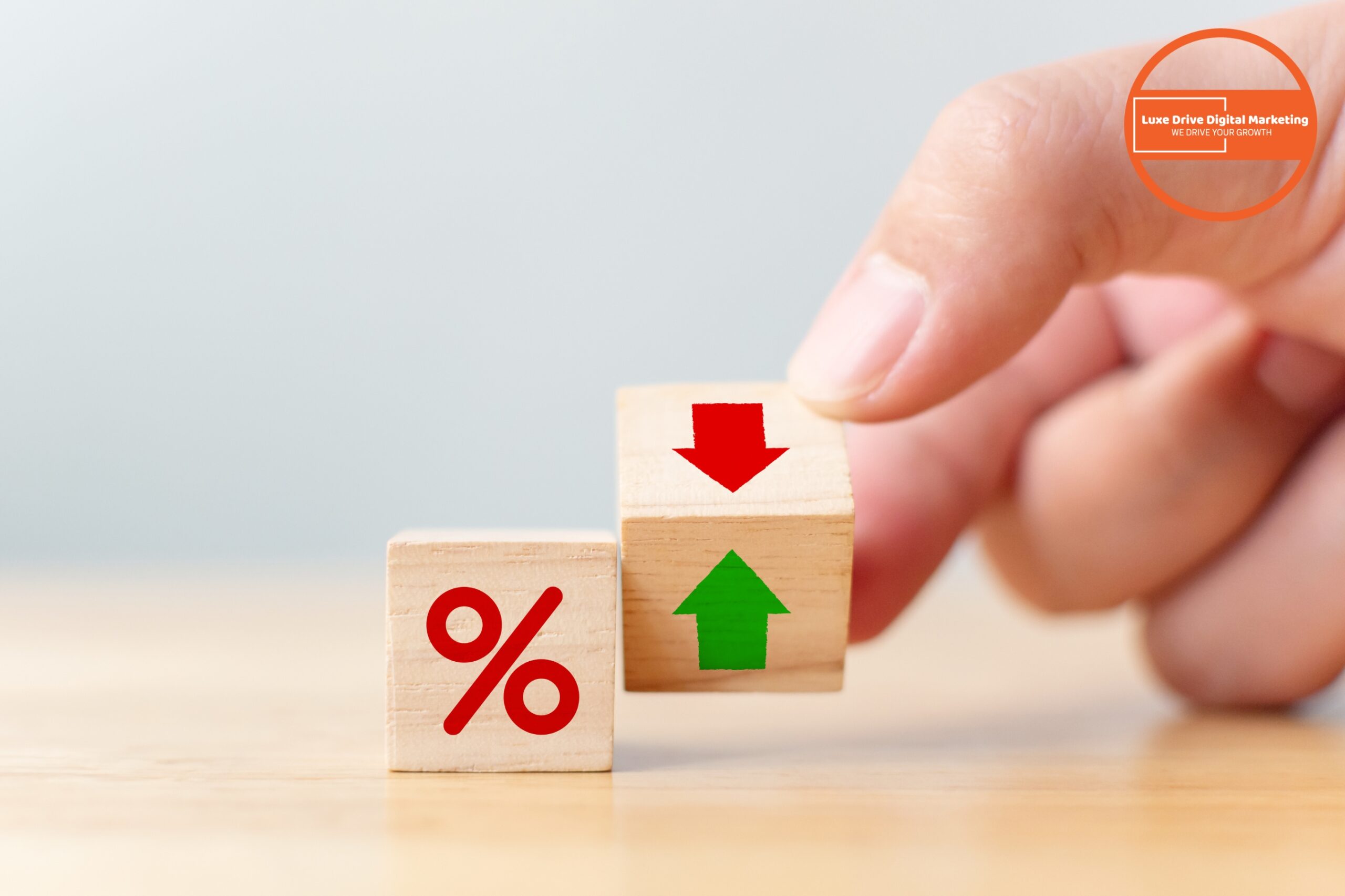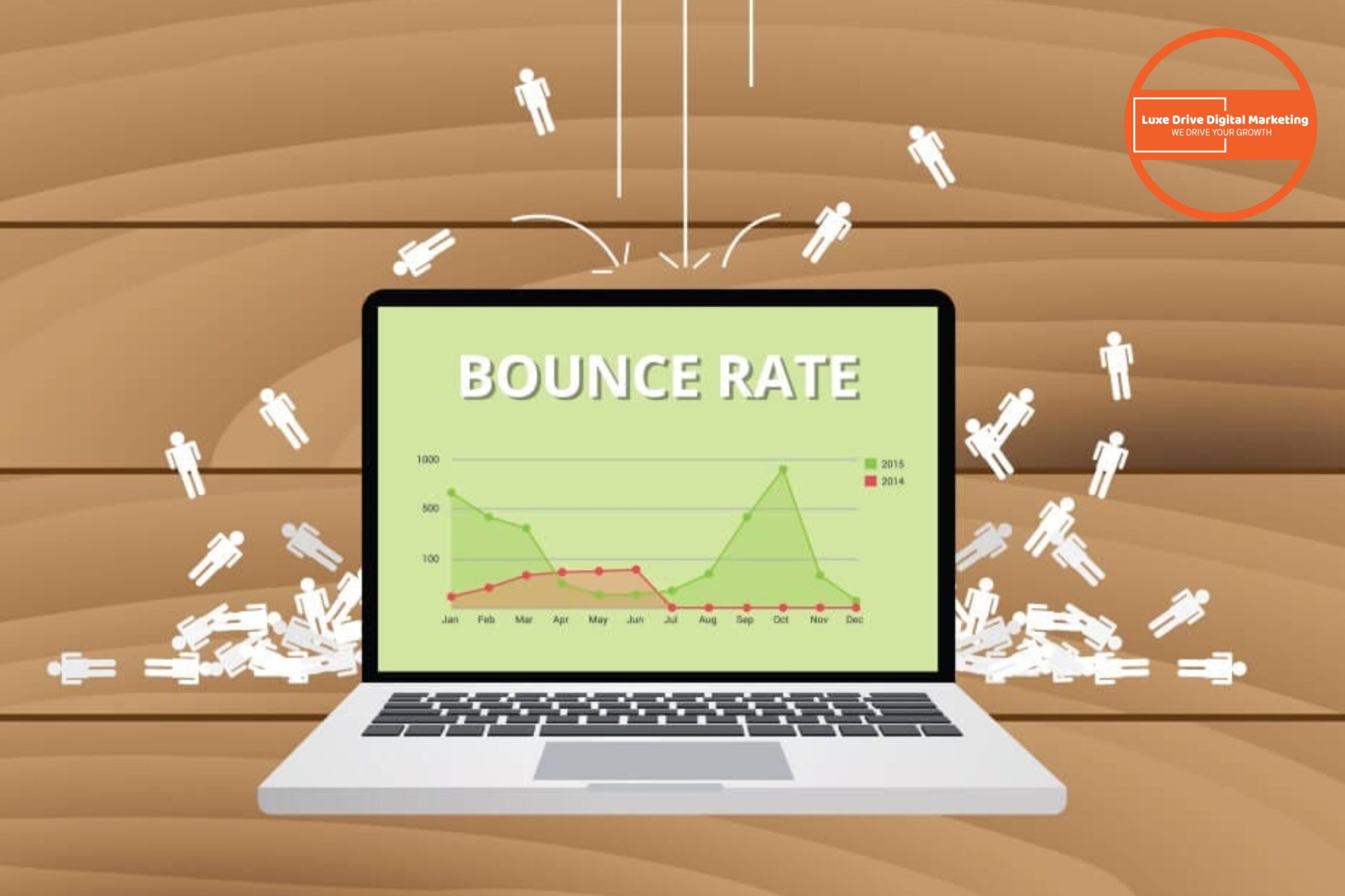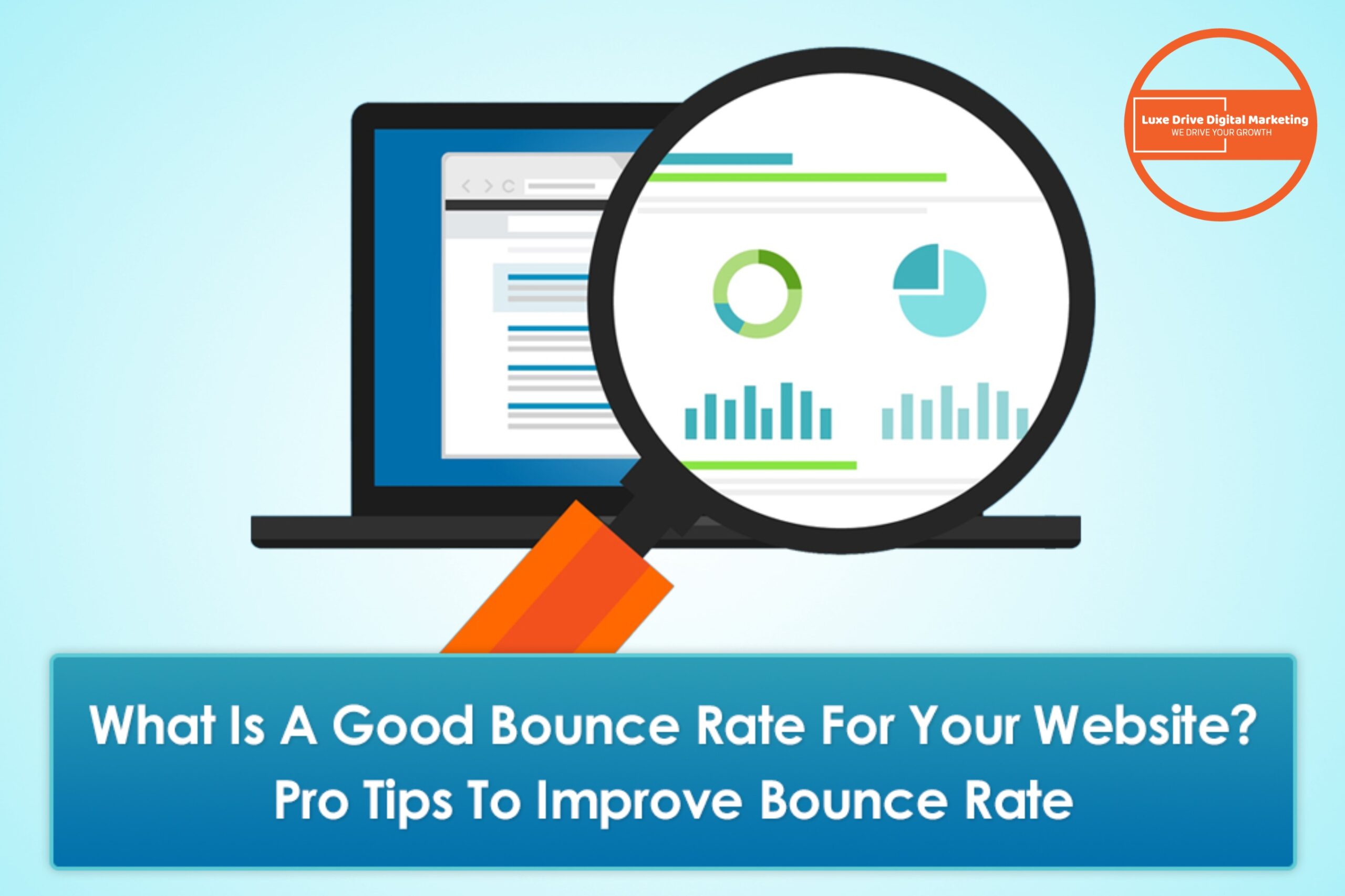Understanding how to effectively reduce bounce rate is essential for any website owner looking to improve conversion rates and overall user experience. Bounce rates represent the percentage of visitors who navigate away from your site after viewing only one page, without any interaction. This metric is crucial for SEO performance and can significantly impact your conversion potential. Let’s explore comprehensive strategies to lower bounce rate and transform casual visitors into engaged customers.
What is Bounce Rate and Why Does it Matter?
Bounce rate is the percentage of single-page sessions where users leave your website without interacting with your content or navigating to other pages on your site. Google Analytics tracks this metric to help you understand user behavior. A high bounce rate often indicates that visitors aren’t finding what they’re looking for or that your user experience needs improvement.
The definition of bounce rate has evolved over time, especially with the introduction of Google Analytics 4. In traditional analytics, a bounce was counted when a user viewed only one page and then left. However, in GA4, the metric is calculated differently, focusing more on engagement rather than simply page views.
Understanding bounce rate is important because it directly correlates with your website’s effectiveness. When users bounce immediately, it suggests they didn’t find value in your content, which can negatively impact both SEO performance and conversion potential. Different bounce rates are normal for different types of websites – blogs might have higher bounce rates than e-commerce sites, for example.
What Causes High Bounce Rates on Websites?
Several factors contribute to high bounce rates, and identifying these issues is the first step toward addressing them. Common causes of high bounce rates include slow page load time, poor website design, irrelevant content, and non-responsive design that doesn’t work well on mobile devices.
Poor navigation is another significant factor. If users can’t easily find what they’re looking for, they’re likely to leave. Complex menus, hidden information, or a lack of clear CTAs can all contribute to navigation problems. Website visitors expect intuitive interfaces that guide them naturally through your content.
Technical issues also play a major role in bounce rate increases. Slow website loads, broken links, and error pages can frustrate users and prompt them to abandon your site. According to research, pages that take more than three seconds to load can see bounce rates increase by up to 32%. Optimizing your page load time is therefore essential for reducing bounce and improving user experience.
How is Bounce Rate Calculated in Analytics?
Bounce rate is calculated differently depending on which version of Google Analytics you’re using. In traditional Google Analytics, the bounce rate is the percentage of sessions where a user views only a single page and doesn’t interact with it before leaving. This metric measures the effectiveness of your landing page in encouraging further exploration.
In Google Analytics 4, bounce rate calculation has changed significantly. GA4 focuses more on engagement metrics rather than simple page views. It considers factors like session duration and specific user interactions to determine whether a session was “engaged” or a “bounce.” This provides a more nuanced view of user behavior on your site.
Understanding how bounce rate is calculated helps you interpret your analytics data more effectively. For example, a high bounce rate on a blog post might not necessarily be negative if users spend several minutes reading the content before leaving. This would be considered a “good bounce” because the user consumed the content they came for. The bounce rate data should always be analyzed in context with other metrics like average session duration and conversion rate.
Is a High Bounce Rate Always Bad?
Not all high bounce rates indicate problems with your website. In some cases, a good bounce rate might be relatively high depending on your website type and goals. For blogs, news sites, or reference pages where users often come to read a specific piece of information, higher bounce rates are common and may not be concerning.
The context of your website and specific pages matters significantly. For example, if your landing page is designed to provide a quick answer or specific information, users might get what they need and leave satisfied – resulting in a high bounce rate but also a positive user experience. In these cases, the bounce rate might not accurately reflect the page’s effectiveness.
However, for e-commerce sites, service pages, or websites designed to guide users through a multi-step process, high bounce rates typically signal problems. If your homepage has a high bounce rate, it suggests that visitors aren’t finding compelling reasons to explore your site further. In these contexts, you should focus on strategies to reduce bounce rate and encourage deeper engagement with your content.
What’s the Difference Between Bounce Rate and Exit Rate?
While often confused, bounce rate and exit rate measure different aspects of user behavior. Bounce rate specifically tracks the percentage of visitors who leave after viewing only one page. Exit rate, on the other hand, measures the percentage of visitors who leave from a specific page, regardless of how many other pages they visited beforehand.
Understanding this distinction helps you analyze user journeys more effectively. A high exit rate on a confirmation or thank you page is expected and not concerning. However, a high exit rate on a product page or checkout page might indicate issues with your conversion funnel that need addressing.
Both metrics provide valuable insights when analyzed together. For example, if a page has both a high bounce rate and a high exit rate, it suggests fundamental problems with the content or user experience. By comparing bounce and exit rates across different pages on your site, you can identify specific areas that need improvement to enhance overall user engagement and reduce abandonment rate.
How Can User Experience Improvements Reduce Bounce?
Enhancing user experience (UX) is one of the most effective ways to reduce bounce rate. When visitors enjoy interacting with your website, they’re more likely to explore multiple pages and engage with your content. Start by ensuring your website design is clean, professional, and aligned with user expectations for your industry.
Navigation plays a crucial role in UX. Make your website intuitive to navigate with clear menus, logical page hierarchies, and obvious pathways to important information. Internal linking between related content encourages users to discover more of your site naturally. Make it as easy as possible for visitors to find what they’re looking for without frustration.
Responsive design is no longer optional – it’s essential. With mobile traffic accounting for more than half of all web traffic, your site must perform flawlessly across all devices. Non-responsive design is a guaranteed way to increase bounce rates, as mobile users will bounce immediately from sites that don’t display properly on their devices. Optimize your site for all screen sizes to ensure a consistent experience regardless of how users access your content.
How Does Page Load Time Impact Bounce Rates?
Page load time has a dramatic impact on bounce rates and is one of the most critical factors to optimize. Research consistently shows that users will bounce from slow-loading websites, with each additional second of load time increasing bounce probability. Google’s own data indicates that as page load time increases from one to ten seconds, the probability of a mobile user bouncing increases by 123%.
To reduce your bounce rate, focus on optimizing your website loads by compressing images, minimizing code, leveraging browser caching, and using content delivery networks (CDNs). These technical optimizations can significantly improve page load performance and keep users engaged with your content.
The impact of load time extends beyond just bounce rate – it affects your SEO performance as well. Google considers page speed as a ranking factor, meaning slower sites may appear lower in search results. By improving your page load time, you can simultaneously enhance user experience, reduce bounce rate, and potentially improve your search engine rankings – creating a positive cycle that benefits your overall digital performance.
What Content Strategies Help Lower Bounce Rate?
Content quality and relevance are fundamental to reducing bounce rates. When users find exactly what they’re looking for on your site, they’re more likely to stay and explore further. Make your content valuable, informative, and directly addressing the needs and questions of your target audience.
Format your content for readability and engagement. Use short paragraphs, bullet points, subheadings, and visual elements to break up text and make it more digestible. Users often scan web pages rather than reading every word, so make your content scannable while still providing depth for those who want more information.
Incorporate multimedia elements like images, videos, and interactive features to make your content more engaging. These elements can significantly increase time on page and reduce bounce rates by giving users multiple ways to interact with your content. Additionally, make your content actionable with clear next steps and calls to action that guide users toward conversion points or related content on your site.
How Can CTAs and Navigation Optimize Bounce Rate?
Strategic placement of CTAs (calls to action) can dramatically reduce bounce rates by giving users clear direction on what to do next. Every page on your website should include at least one compelling CTA that guides visitors toward conversion or further engagement. Make your CTAs visually distinct, with action-oriented text that clearly communicates the benefit of clicking.
Navigation optimization is equally important for bounce rate reduction. Users should never feel lost on your site or struggle to find information. Implement intuitive menu structures, breadcrumb navigation, and search functionality to help users quickly locate what they need. Consider using heat mapping tools to understand how users interact with your navigation elements and make improvements based on actual user behavior.
Internal linking is another powerful strategy to lower your bounce rate. By strategically linking to related content throughout your site, you create natural pathways for users to discover more of what you offer. This not only reduces bounce rate but also increases page views per session and time on site – all positive signals for both user engagement and SEO performance.
How to Use Analytics to Identify Bounce Rate Issues?
Google Analytics provides powerful tools for diagnosing bounce rate problems across your website. Start by segmenting your bounce rate data by traffic source, device type, and landing page to identify specific patterns. For example, you might discover that mobile users have a significantly higher bounce rate than desktop users, indicating potential responsive design issues.
With Google Analytics 4, you can gain even deeper insights into user behavior through enhanced engagement metrics. Examine user flows to see where visitors typically enter your site and which paths lead to the highest engagement or conversion rates. This information helps you identify pages that need optimization or redesign to better meet user expectations.
Look beyond just the bounce rate metric to understand the full context. Analyze average session duration, pages per session, and conversion rates alongside bounce rate. A page with a high bounce rate but also a high conversion rate might actually be performing well despite the bounce metric. Use bounce rate as one indicator within a broader analysis of your website’s performance rather than viewing it in isolation.
What Technical Optimizations Reduce Bounce Rate?
Technical optimizations play a crucial role in bounce rate reduction. Start with comprehensive website performance testing to identify bottlenecks and areas for improvement. Tools like Google PageSpeed Insights can provide specific recommendations for your site.
Implement technical SEO best practices to ensure your site is easily crawlable and indexed by search engines. This includes optimizing meta descriptions and title tags to accurately reflect page content, which helps set appropriate user expectations before they click through to your site. When users find exactly what they expected based on search results, they’re less likely to bounce.
Consider using advanced techniques like lazy loading for images and videos, which can significantly improve initial page load times. Implement proper error handling to ensure users never encounter broken pages or dead-end experiences. Each technical optimization contributes incrementally to a better user experience, which collectively can have a substantial impact on reducing your website’s bounce rate.
How to Balance SEO and Bounce Rate Optimization?
While optimizing for SEO and reducing bounce rates often go hand-in-hand, sometimes these goals can seem at odds. For example, keyword-rich content might attract traffic but fail to engage users if it doesn’t provide genuine value. The key is finding the right balance between optimization for search engines and creating truly engaging user experiences.
Focus on creating content that satisfies both search intent and user needs. This means going beyond just including keywords to providing comprehensive, valuable information that answers users’ questions completely. When visitors find exactly what they’re looking for, they’re more likely to engage with your site further, reducing bounce rates while still maintaining strong SEO performance.
Use engagement metrics as feedback for your SEO strategy. If certain keywords or topics consistently lead to high bounce rates, it may indicate a mismatch between search intent and your content. Adjust your approach to better align with what users are actually seeking. This user-centric approach to SEO ultimately leads to better performance across all metrics, including both search rankings and engagement rates.
Key Strategies to Reduce Bounce Rate and Improve Conversions
To summarize the most effective approaches to reducing bounce rate and improving conversions:
- Optimize page load time to ensure your website loads quickly on all devices
- Improve user experience with intuitive navigation and responsive design
- Create high-quality, relevant content that directly addresses user needs
- Implement strategic CTAs that guide users toward conversion points
- Use internal linking to encourage exploration of your site
- Ensure mobile optimization with responsive design for all screen sizes
- Analyze bounce rate data in context with other engagement metrics
- Address technical issues that might cause users to leave your site
- Optimize landing pages to match user expectations and search intent
- Implement A/B testing to continuously improve page performance
Conclusion
Reducing your website’s bounce rate requires a multifaceted approach that addresses both technical and content aspects of your site. By understanding the causes of high bounce rates and implementing the strategies outlined in this article, you can significantly improve website engagement and conversion rates. Remember that bounce rate optimization is an ongoing process that requires continuous monitoring and refinement.
The most successful websites make it as easy as possible for visitors to find what they’re looking for while providing clear pathways to conversion. By focusing on user experience, page load time, content quality, and strategic navigation, you can create a website that not only attracts visitors but keeps them engaged. This holistic approach to bounce rate reduction will ultimately lead to higher conversion rates, improved SEO performance, and a stronger online presence for your business.



